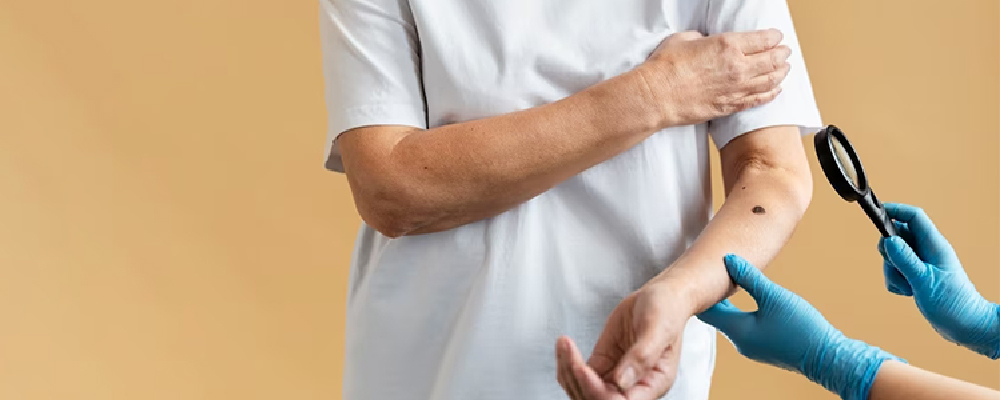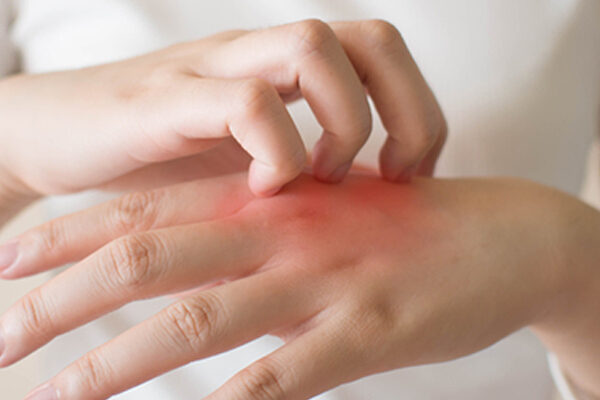Updated on August 17, 2023
What is Subcutaneous Nodules?
A nodule is an abnormal tissue growth. Subcutaneous nodules can form just beneath the skin. They can also form in deeper skin layers or internal organs. These small, palpable lumps that form beneath the skin’s surface are intriguing but frequently misunderstood features of several dermatological medical conditions.
In this blog, we will look at subcutaneous nodularis and its relationship to rheumatic fever, as well as potential causes, sites of occurrence, inflammatory aspects, and the significance of idiopathic nodular panniculitis. Furthermore, we will address a common concern: Are nodules anything to worry about?
Understanding Subcutaneous Nodularis
Subcutaneous nodules, also known as “lumps” or “bumps,” are firm, raised lesions that form beneath the surface of the skin. They can be palpable or visible and range in size from a few millimeters to several centimeters.
These nodules can form in response to a variety of factors, including infections, inflammatory conditions, trauma, or an immune response. Rheumatic fever is a condition that is closely associated with subcutaneous nodules.
Subcutaneous Nodules & Rheumatic Fever
Rheumatic fever is a severe inflammatory condition caused by a streptococcal throat infection, such as strep throat or scarlet fever. The formation of nodules is one of the distinguishing features of rheumatic fever.
These nodules are most commonly found on the extensor surfaces of joints, particularly near the elbows, knees, and wrists. They are frequently firm, painless, and vary in size.
Subcutaneous Nodules: Causes
Aside from rheumatic fever, these nodules can develop from a variety of underlying causes. Among these factors are:
• Rheumatoid Arthritis:
This autoimmune disorder can result in the formation of nodules, commonly referred to as rheumatoid nodules. These nodules are most commonly found near joints like the fingers, elbows, and knees.
• Gout:
It is a type of arthritis caused by the accumulation of uric acid crystals in the joints. These crystals can also cause the formation of tophi, which are nodules that typically appear in the joints, ears, and soft tissues.
• Infections:
Subcutaneous nodules can form as a result of bacterial or fungal infections. These nodules could form as part of the body’s immune response to the infection.
• Idiopathic Nodular Panniculitis:
This rare condition, also known as Weber-Christian disease, causes inflammation of the subcutaneous fat layer. The precise cause is frequently unknown, hence the term “idiopathic.” It causes tender subcutaneous nodules, which may be accompanied by fever and other symptoms.
• Trauma or Injury:
Nodules can form because of trauma or repeated friction on the skin as part of the body’s healing process.
Subcutaneous Nodules: Sites
These types of nodules can appear anywhere on the body, and their location often reveals information about their underlying causes. They can be found in the abdomen, as well as the arms, legs, fingernails, buttocks, ears, scalp, back, chest, and neck.
These nodules may be caused by inflammatory conditions that affect the abdominal wall or the underlying fat layer. Subcutaneous nodules abdomen may be a sign of inflammation caused by infections or other systemic issues in some cases.
Idiopathic Nodular Panniculitis: A Closer Look
Idiopathic nodular panniculitis, also known as Weber-Christian disease, is a rare condition characterized by subcutaneous fat layer inflammation. This condition causes the formation of tender, subcutaneous nodules that can vary in size. The exact cause of idiopathic nodular panniculitis is unknown, making diagnosis and treatment difficult.
The nodules may appear on the thighs, buttocks, or other areas where subcutaneous fat is concentrated. Management frequently includes addressing inflammation and relieving symptoms with medication.
What is an Inflammation of the Subcutaneous Nodules?
Inflammation plays an important role in the formation and persistence of nodules. Inflammation occurs when the immune system of the body responds to an injury, infection, or other triggers.
In the case of subcutaneous nodules, inflammation can cause redness, warmth, pain, and swelling. Immune cells gather in the affected area to fight off any potential threats, but this immune response can sometimes result in tissue accumulation and the formation of a nodule.
Are Nodules Anything to Worry About?
Subcutaneous nodules are a source of concern due to their underlying cause and associated symptoms. While some nodules are harmless and go away on their own, others can be signs of serious medical conditions that require immediate attention from specialized healthcare experts. If you notice any of the following symptoms, you should seek medical attention immediately:
• Persistent Nodules:
Nodules that do not disappear or grow should be evaluated by a doctor.
• Pain or Discomfort:
Nodules that are painful, tender, or causing discomfort may be a sign of an underlying problem.
• Accompanying Symptoms:
If nodules are accompanied by symptoms such as fever, joint pain, fatigue, or unexplained weight loss, it could be a sign of a larger issue.
• Change in Appearance:
Nodules that change color, shape, or texture should be evaluated by a medical professional.
Treatment Options Available
The treatment for subcutaneous nodularis is determined by the underlying cause. If nodules are caused by infections, antimicrobial therapy can be prescribed. In the case of inflammatory conditions such as rheumatoid arthritis, controlling inflammation becomes essential, and medications known as disease-modifying antirheumatic drugs (DMARDs) may be used. Benign nodules that cause pain may be surgically removed. The treatment of idiopathic nodular panniculitis focuses on pain management and anti-inflammatory measures.
Also read: Prurigo nodularis: Treatment, Foods to Avoid & More
Conclusion
Subcutaneous nodules are fascinating entities that can reveal important information about a person’s health. While some nodules are harmless and resolve on their own, others may be symptoms of underlying medical conditions that require treatment.
If anyone notices persistent or concerning nodules, they should seek medical attention. The mystery of subcutaneous nodules can be solved with proper diagnosis and management, leading to improved health and peace of mind.





